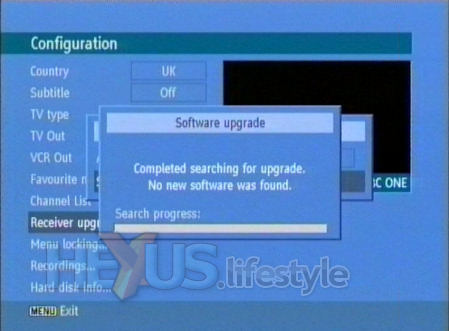Around the back
Around the back of the Evesham are pretty much all the sockets you'd expect for the tasks it can carry out but, since the box can record only from its own twin TV tuners, that means there's no video or audio inputs.
You might think it would be useful to be able to record from a VCR or a camcorder to the Evesham and we wouldn't disagree, though we'd add that any such options would be rather pointless. That's because, in contrast with, say, a Freeview hard-disk/DVD recorder, the PVR160 offers little scope for editing - not even of what's been recorded from its built-in tuners. There's no way, for instance, to chop up a movie at the commercials, delete them and then rejoin the remaining parts.
However, a Freeview hard-disk/DVD recorder with this ability is going to cost a good deal more than the Evesham. Toshiba's RD-85DT, for instance, is one of the cheapest and is priced at around £255.
Since we're old hands with PC-based video editing, we'd have liked to have had a FireWire output so that we could take recordings into a PC for tweaking and burning to DVD or converting to a format suitable for playback with a network media player, such as the Pinnacle ShowCenter 200 we reviewed recently.
But there is no option, digitally, to directly connect the Evesham to a PC, not even in the way, say, you can via USB with the popular but slightly venerable Humax PVR-9200T Freeview PVR.
It's possible, of course, to do PC editing by using an additional analogue-to-digital converter box that produces DV or MPEG-2 in real time - bringing this output by FireWire or USB into an editing program running on the computer. But such boxes are priced from around £100 and the better ones typically cost £150 or more.
As an alternative, what you could do is record via analogue to a VCR or low-cost set-top DVD recorder - and some DVD recorders do offer limited editing of the recordings they make to re-writable DVD.
The Evesham' connection to a recorder could be by Scart - and the PVR160's VCR Scart socket can be set from a menu to output S-video or composite video - or via phono sockets, the unit having composite video and L/R audio sockets.
The video-socket line-up is completed by another Scart, used to connect to a TV set. This adds a third menu-selectable output option - RGB - on top of S-video and composite. From our experience trying all three, RGB is what we'd choose to feed a TV set.
Around the back, and masked in our shot by protective black adhesive tape - there's also an SPDIF digital audio output (which we didn't test), plus an RF aerial input and output. The input brings in the Freeview signal and the RF output is intended only as a pass-through to a TV set - the Evesham can't output its own recordings via RF the way a typical VCR does. Also unlike a VCR, the Evesham, seemingly, makes no attempt to amplify the signal it's passing on.
We were concerned that this would result in the signal being a little degraded after passing through the Evesham, but we didn't see or hear any difference on TV between an aerial signal fed directly and one coming via the Evesham. But, as we said, the quality of the pictures we see on a TV with an analogue tuner isn't good, so it's not easy to say for sure that there was no impact.
Three other sockets are fitted but you're unlikely to actively use any of them. One is an RS232 port for software upgrades. However, in theory, the box will normally pick up automatically from a broadcast that will take place around 3am. We say "in theory" because while we've had the Evesham, there's been no situation when an upgrade has come available, never mind been downloaded - though we did note that the PVR160 powered up at the alloted time.
To double-check, and see if there was a newer upgrade available than the installed V3.9, we tried using the manual Receiver upgrade option from the Configuration menu but were told, after a search, that no new software had been found.
The final two sockets are RF again but these are permanently bridged to bring the aerial signal from one of the PRV160's tuners to the other.
Okay, we said earlier that a product like the Evesham lives or dies by the quality of its IR handset and its general ease of use, so let's look at those things now, on page four.





